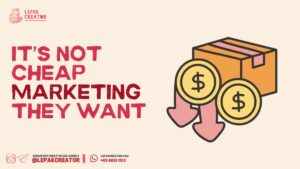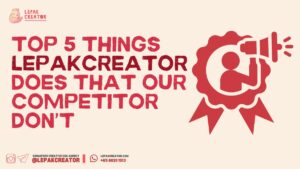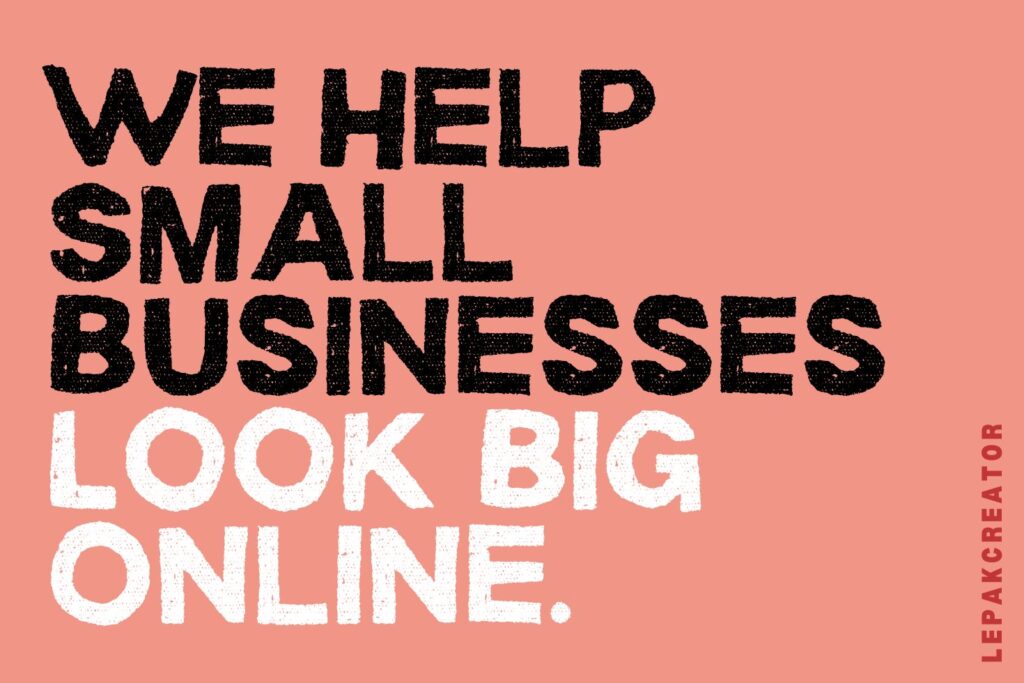Here’s What Nobody Tells You About Influencer Marketing.
Influencer marketing has exploded in popularity. From TikTok to Instagram, it seems every brand is jumping on the bandwagon. But ask yourself honestly: are you truly strategically doing influencer marketing, or just following the trend because everyone else is?
Many businesses get disappointed after trying influencer marketing. The most common feedback? “The influencers didn’t bring in sales.” Or “It’s not effective; we didn’t see results.” The problem isn’t always with the influencers — it’s often with the strategy (or lack of it) behind the campaign.
What most people don’t realize is that not all influencers are meant to “sell” directly. Some are great educators who build trust and awareness, while others are actual “influence drivers” who push conversions and sales. Mixing them up without understanding their roles is like serving dessert before the main course — it might look good, but it doesn’t satisfy.
The Two Types of Influencers You Need to Know
Content Educators
These creators focus on high-quality content that educates and inspires. They help potential customers understand your brand story, benefits, and usage tips.
They’re excellent for:
- Building brand credibility and trust
- Explaining product benefits in detail
- Positioning your brand as an authority
However, don’t expect them to flood your checkout page overnight. Their strength lies in nurturing relationships and planting seeds for future conversions.
💥 Influence-Driven Creators
These are the influencers who can really move products off the shelves. They speak directly to their followers, often sharing authentic, personal experiences and strong calls to action.
They’re perfect for:
- Driving immediate sales and sign-ups
- Pushing limited-time promotions or launches
- Creating a sense of urgency (“Get it before it sells out!”)
Their followers trust them deeply — so when they say “buy this,” many actually do.
The Secret Sauce: The Wave Approach
Now that you know the difference, how do you combine these two types of creators effectively?
Introducing the Wave Approach — a strategy that leverages both types of influencers in a thoughtful, phased, and powerful way.
🌊 Wave 1: The Warm-Up Wave
Start with Content Educators to build anticipation and educate the audience. This wave is about laying a strong foundation so people understand why your brand or product matters.
🌊 Wave 2: The Conversion Wave
Once you’ve created awareness and trust, bring in the Influence-Driven Creators. This second wave focuses on pushing for action — whether it’s making a purchase, signing up, or visiting your store.
Variations of the Wave Approach
- Single Strong Wave: Use both types at the same time but with different content angles — education and conversion happening together.
- Repeating Waves: Alternate educational and selling phases over several months to maintain excitement and drive periodic spikes in sales.
- Segmented Wave: Target different audience segments with different influencer types to maximize relevance and reach.
Why Most Brands Fail (and How to Win)
Most brands fail because they expect all influencers to magically drive sales without first building trust. By using the Wave Approach, you create a journey: first, you inform and inspire; then, you convert.
Instead of seeing influencers as “walking billboards,” start seeing them as partners guiding your customers from curiosity to commitment.
The Bottom Line
Influencer marketing is more than just a trend — it’s an art and a science. Done right, it can build long-lasting brand loyalty and drive real results. Done wrong, it’s just expensive noise.
So, next time you think about launching an influencer campaign, ask yourself: Do I really know what I’m doing? Or am I just following the crowd?
Choose wisely. And remember, the wave starts small — but when done right, it can carry your brand to shore stronger than ever.




